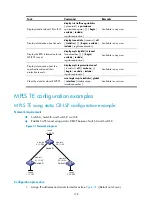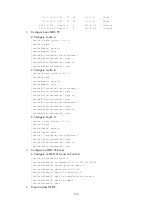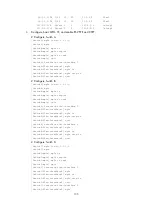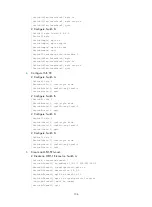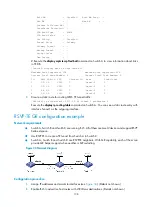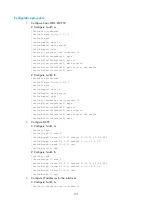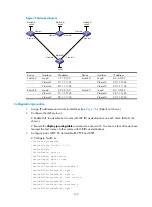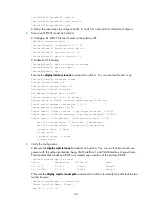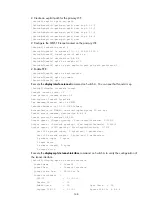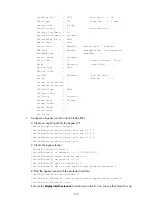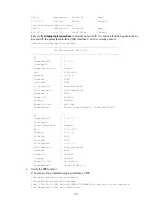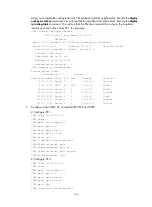
142
[SwitchA-Vlan-interface12] ip address 12.12.12.1 24
[SwitchA-Vlan-interface12] quit
# Configure Switch B.
[SwitchB] interface vlan-interface 12
[SwitchB-Vlan-interface12] ip address 12.12.12.2 24
4.
Configure the MPLS TE tunnel:
# Configure an RSVP-TE tunnel between Switch A and Switch B.
[SwitchA] interface tunnel 1
[SwitchA-Tunnel1] ip address 10.10.10.1 24
[SwitchA-Tunnel1] tunnel-protocol mpls te
[SwitchA-Tunnel1] destination 2.2.2.2
[SwitchA-Tunnel1] mpls te tunnel-id 10
[SwitchA-Tunnel1] mpls te signal-protocol rsvp-te
[SwitchA-Tunnel1] mpls te commit
[SwitchA-Tunnel1] return
5.
Verify the configuration:
# On Switch A, display the detailed information about the BFD session between Switch A and
Switch B.
<SwitchA> display bfd session verbose
Total Session Num: 1 Init Mode: Active
Session Working Under Ctrl Mode:
Local Discr: 21 Remote Discr: 20
Source IP: 12.12.12.1 Destination IP: 12.12.12.2
Session State: Up Interface: Vlan-interface12
Min Trans Inter: 400ms Act Trans Inter: 400ms
Min Recv Inter: 400ms Act Detect Inter: 2000ms
Running Up for: 00:00:01 Auth mode: None
Connect Type: Direct Board Num: 6
Protocol: RSVP
Diag Info: No Diagnostic
CR-LSP backup configuration example
Network requirements
Set up an MPLS TE tunnel from Switch A to Switch C. Use CR-LSP hot backup for it.

